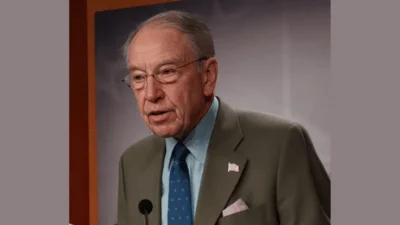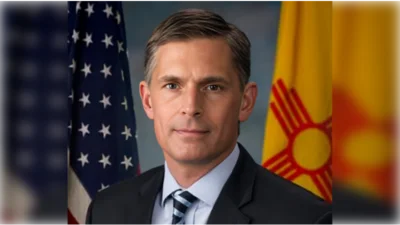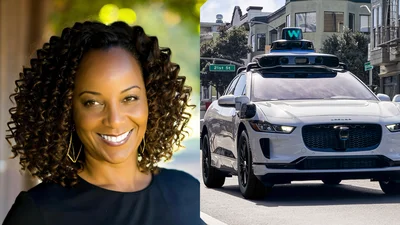The Congressional Record is a unique source of public documentation. It started in 1873, documenting nearly all the major and minor policies being discussed and debated.
“WHY CATHOLIC SCHOOL MODEL IS TABOO” mentioning the U.S. Dept of State was published in the Extensions of Remarks section on pages E1353-E1354 on July 24, 1996.
The publication is reproduced in full below:
WHY CATHOLIC SCHOOL MODEL IS TABOO
______
HON. NEWT GINGRICH
of georgia
in the house of representatives
Wednesday, July 24, 1996
Mr. GINGRICH. As we consider ways in which we might improve our Nation's inner city schools, I hope that my colleagues take a moment to read the following editorial by Sol Stern from the Wall Street Journal, Wednesday, July 17, 1996. Now is the time for us to ask some very hard questions about how we have been spending taxpayer funds on education. I believe there is a lesson to be learned by the parochial schools who provide an exceptional education at an affordable price.
Why the Catholic School Model Is Taboo
(By Sol Stern)
New York City's Cardinal John J. O'Connor has repeatedly made the city an extraordinary offer: Send me the lowest-performing 5% of children presently in the public schools, and I will put them in Catholic schools--where they will succeed. The city's response: silence.
In a more rational world, city officials would have jumped at the cardinal's invitation. It would have been a huge financial plus for the city. The annual per-pupil cost of Catholic elementary schools is $2,500 per year, about a third of what taxpayers now spend for the city's public schools.
no idle boast
More important, thousands more disadvantaged children would finish school and become productive citizens. For Cardinal O'Connor's claim that Catholic schools would do a better job than public schools is no idle boast. In 1990 the RAND Corporation compared the performance of children from New York City's public and Catholic high schools. Only 25% of the public-school students graduated at all, and only 16% took the Scholastic Aptitude Test, vs. 95% and 75% of Catholic-school students, respectively. Catholic-school students scored an average of 815 on the SAT. By shameful contrast, the small ``elite'' of public-school students who graduated and took the SAT averaged only 642 for those in neighborhood schools and 715 for those in magnet schools.
In 1993 the New York State Department of Education compared city schools with the highest levels of minority enrollment. Conclusion: ``Catholic schools with 81% to 100% minority composition outscored New York City public schools with the same percentage of minority enrollment in Grade 3 reading
(+17%), Grade 3 mathematics (+10%), Grade 5 writing (+6%), Grade 6 reading (+10%) and Grade 6 mathematics (+11%).''
Yet most of the elite, in New York and elsewhere, is resolutely uninterested in the Catholic schools' success. In part this reflects the enormous power of teachers' unions, fierce opponents of anything that threatens their monopoly on education. In part it reflects a secular discomfort with religious institutions.
I myself have felt this discomfort over the years, walking past Catholic schools like St. Gregory the Great, near my Manhattan home. Every morning, as I took my sons to public school, I couldn't help noticing the well-behaved black and Hispanic children in their neat uniforms entering the drab parish building. But my curiosity never led me past the imposing crucifix looking down from the roof, which evoked childhood images of Catholic anti-Semitism and clerical obscurantism.
Finally, earlier this year, I ventured in, and I was impressed. I sat in, for example, as fourth-grade teacher Susan Viti conducted a review lesson on the geography of the Western United States. All the children were completely engaged and had obviously done their homework. They were able to answer each of her questions about the principal cities and capitals of the Western states--some of which I couldn't name--and the topography and natural resources of the region.
``Which minerals would be found in the Rocky Mountains?'' Miss Viti asked. Eager hands shot up. Miss Viti used the lesson to expand the students' vocabulary; when the children wrote things down, she insisted on proper grammar and spelling.
I found myself wishing that my own son's fourth-grade teachers at nearby Public School 87, reputedly one of the best public schools in the city, were anywhere near as productive and as focused on basic skills as Miss Viti. Both my boys' teachers have wasted an enormous amount of time with empty verbiage about the evils of racism and sexism. By contrast, in Miss Viti's class and in all the other Catholic-school classes I visited, it was taken for granted that a real education is the best antidote to prejudice.
Miss Viti earns $21,000 a year, $8,000 less than a first-year public-school teacher. ``I've taught in an all-white, affluent suburban school, where I made over $40,000,'' she says. ``This time I wanted to do something good for society, and I am lucky enough to be able to afford to do it. I am trying to instill in my students that whatever their life situation is now, they can succeed if they work hard and study.''
You might expect liberals, self-styled champions of disadvantaged children, to applaud the commitment and sacrifice of educators like Susan Viti. You might even expect them to look for ways of getting government money to these underfunded schools. Instead, they've done their best to make sure the wall of separation between church and state remains impenetrable. Liberal child-advocacy groups tout an endless array of ``prevention'' programs that are supposed to stave off delinquency, dropping out of school and teen pregnancy--yet they consistently ignore Catholic schools, which nearly always succeed in preventing these pathologies.
Read the chapter on education in Hillary Clinton's ``It Takes a Village.'' Mrs. Clinton advocates an alphabet soup of education programs for poor kids, but says not a word about Catholic schools. Similarly, in his books on education and inner-city ghettos, Jonathan Kozol offers vivid tours of decrepit public schools in places like the South Bronx, but he never stops at the many Catholic schools that are succeeding a few blocks away.
Why are Catholic schools taboo among those who talk loudest about compassion for the downtrodden? It's hard to escape the conclusion that one of the most powerful reasons is liberals' alliance with the teachers' unions, which have poured hundreds of millions of dollars into the campaign coffers of liberal candidates around the country. Two weeks ago I attended the National Education Association convention in Washington, a week-long pep rally for Bill Clinton punctuated by ritual denunciations of privatization.
Before the teachers' unions rise to political power, it was not unusual to see urban Democrats like former New York Gov. Mario Cuomo support government aid to Catholic schools. Mr. Cuomo's flip-flop on this issue is especially revealing. In 1974, when he first ran for public office, Mr. Cuomo wrote a letter to potential supporters: ``I've spent more than 15 years . . . arguing for aid to private schools,'' he wrote.
``If you believe aid is a good thing, then you are the good people. If you believe it, then it's your moral obligation, as it is my own, to do something about it. . . . Let's try tax-credit plans and anything else that offers any help.''
Mr. Cuomo soon learned his lesson. In his published diaries he wrote: ``Teachers are perhaps the most effective of all the state's unions. If they go all-out, it will mean telephones and vigorous statewide support. It will also mean some money.'' In his 1982 campaign for governor, Mr. Cuomo gave a speech trumpeting the primacy of public education and the rights of teachers. He won the union's enthusiastic endorsement against Ed Koch in the Democratic primary. Over the next 12 years, in private meetings with Catholic leaders, Gov. Cuomo would declare that he still supported tax relief for parochial school parents. Then he would take a completely different position in public. For example, in 1984 he acknowledged that giving tax credits for parochial-school tuition was ``clearly constitutional'' under a recent Supreme Court decision--but he refused to support such a plan.
Politically controlled schools are unlikely to improve much without strong pressure from outside. Thus, the case for government aid to Catholic schools is now more compelling than ever, if only to provide the competitive pressure to force state schools to change. And the conventional wisdom that government is constitutionally prohibited from aiding Catholic schools has been undermined by several recent U.S. Supreme Court decisions.
sucker's trap
Since the powerful teachers' unions vehemently oppose any form of government aid to Catholic schools, reformers are often skittish about advocating vouchers or tuition tax credits, fearing that will end the public-school reform conversation before it begins. But to abandon aid to Catholic schools in the name of public-school reform is a sucker's trap. We have ended up with no aid to Catholic schools and no real public-school reform either.
Catholic schools are a valuable public resource not just because they profoundly benefit the children who enroll in them. They also challenge the public school monopoly, constantly reminding us that the neediest kids are educable and that spending extravagant sums of money isn't the answer. No one who cares about reviving our failing public schools can afford to ignore this inspiring laboratory of reform.
TRIBUTE TO BOB OLIVE
______
HON. MARTIN R. HOKE
of ohio
in the house of representatives
Wednesday, July 24, 1996
Mr. HOKE. Mr. Speaker, I rise today to congratulate and recognize America's most outstanding public television programmer, Mr. Bob Olive of WVIZ-TV in Cleveland. On June 21, Mr. Olive was named ``1996 Programmer of the Year'' by his peers in the Public Television Programmers Association for demonstrating excellence and expertise within public broadcasting.
This recent award brings much deserved recognition of Bob Olive's successful effort to attract record-breaking viewership to programming on WVIZ-TV. In the past 2 years, overall viewership of the station has risen more than 50 percent with certain time slots rising 200 percent, an absolutely remarkable increase in today's competitive television environment. In 13 of the past 15 months, the station has experienced a rise in the number of viewers.
Of special note is Mr Olive's ability to program effectively for different segments of the television viewing community. WVIZ-TV is the most watched private or public network in Cleveland among young children. Mr. Olive was instrumental in the development of ``KidTV on VIZ'', a daily 12-hour period of creative programming designed to provide the educational initiative for children to learn.
A Cleveland native, Bob Olive graduated from Parma's Valley Forge High School, earned a bachelor of science degree in education at Bowling Green State University, and did graduate work in speech and communication at Case Western Reserve University. An electronics technician for the Navy from 1968 through 1972, Mr. Olive was destined to involve himself in a long and distinguished career within the field of the electronic media.
In an 18-year career with WVIZ-TV, a public television station broadcasting across the Cleveland viewing area, Bob Olive has demonstrated an extraordinary commitment to quality programming. He served the station well, as the director of public affairs, community affairs, and also as an announcer.
He began his career in broadcast communications beginning in 1959 as a morning announces for WSJH, the radio station for Schaaf Junior High School. After 9 years of dedicated service with WVIZ-TV, he served as news manager at WEWS-TV, an ABC affiliate in Cleveland, where he created the long running and very popular news program, ``Live on Five'', which is still aired, before returning to WVIZ.
In addition to his service to the Cleveland area, he extends his talents throughout the country, serving on the National Program Policy Committee as an advisor to the Public Broadcasting System.
Dr. Judy LeRoy, co-director of Trac Media Services, in presenting this award praised Mr. Olive for his ``achievements in creative scheduling, audience enhancement, local outreach and program acquisition.'' She also noted his ability to make ``constant, substantial audience gains over the past several years.''
Mr. Speaker, I could not allow Mr. Bob Olive's exceptional service and achievements to go without notice. His programming achievements, especially in the area of children's broadcasting, have provided the entire WVIZ broadcast audience with a first-rate television product. He has been instrumental in enriching the lives of the people of northeast Ohio and we are grateful for his outstanding contributions and service.
____________________








